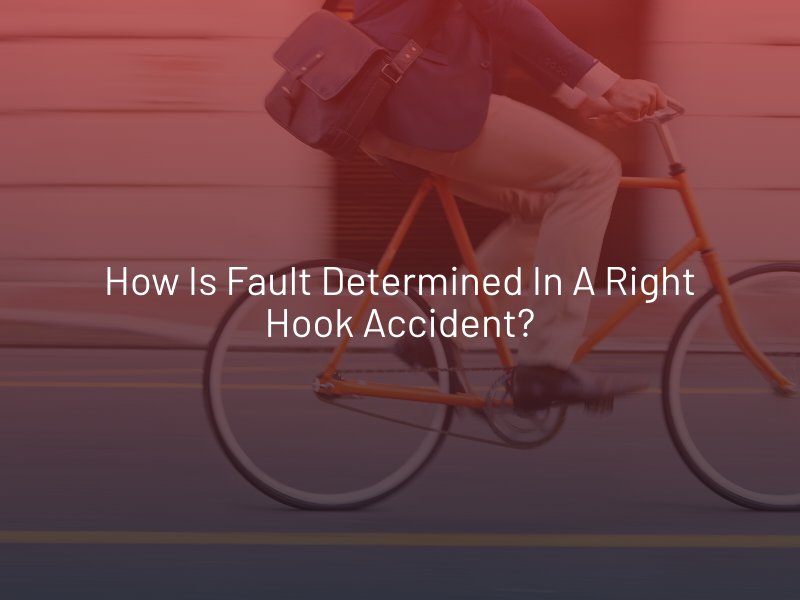How Is Fault Determined in a Right Hook Accident?
When a bicyclist is passing a car on the right, they can get “right hooked” if the vehicle turns immediately in front of them or crashes into them while turning. In the majority of these cases, the driver is at fault, but here is how liability is determined.

Evidence of Negligence
Nevada is an “at-fault” state, which means the party who causes a collision is responsible for damages. Therefore, when an accident is reported to an insurance company, an adjuster will investigate to determine who was at fault. In a right hook accident, they will consider any evidence of negligence. For instance:
- The location of the damage to the vehicle.
- Eyewitness testimony, which may be able to confirm that the driver:
- Failed to signal before turning.
- Failed to check blind spots before turning.
- Cut off the bicyclist who had the right of way.
- Was texting while driving or otherwise distracted.
- Was recklessly swerving.
- Made an illegal or unsafe right turn
- Video surveillance footage of the accident.
- Cell phone records of the at-fault driver
- Food wrappers or receipts that show the driver may have been distracted by eating when they turned.
If there is proof that if the driver had behaved with reasonable care, they could have prevented the right hook accident, they will be liable. If liability is difficult to prove, a Las Vegas bicycle accident lawyer has the resources to hire experts to prove fault. For example, an accident reconstruction expert who can establish how the right hook accident occurred and who caused it.
The Police Report
A police report does not always have the final say, but it carries a lot of weight in an insurance adjuster’s decision on fault. The officer’s opinion on how the accident was caused and who is responsible is unbiased evidence. They will also give various details, such as:
- The final positioning of the car and bicycle
- The location and damage to the vehicle and bicycle
- The extent of injuries
- Whether airbags deployed
- Any skid marks on the road from attempts to brake
- Statements from the driver and bicyclist
- Interviews with witnesses to the accident
- Whether the driver or bicyclist was intoxicated or issued a citation
- Whether the car was malfunctioning
- Video they viewed of the accident
- And more.
If the driver is cited for a traffic violation or charged with a crime (e.g., failing to signal, drunk driving, etc.), it can be significant evidence of fault which will be challenging for the driver to dispute.
Shared Fault
Each party involved in a collision is assigned a percentage of fault. As a result, it is possible for a bicyclist to be partially or entirely to blame for a right hook accident. Bicyclists must follow the same traffic laws as motorists. Therefore, a negligent action on their part that contributed to the accident can reduce their ability to recover compensation—for example, riding on the sidewalk, riding while intoxicated, failing to stop at stop signs or red lights, failing to yield the right of way, etc.
Under Nevada’s modified comparative fault system, you can recover compensation as long as you are no more than 50% at fault. For example, if a bicyclist is awarded $100,000 and found 30 percent at fault for a right hook accident, they will recover 70 percent of their total compensation or $70,000. However, if they are found 51% responsible, they cannot recover any compensation.